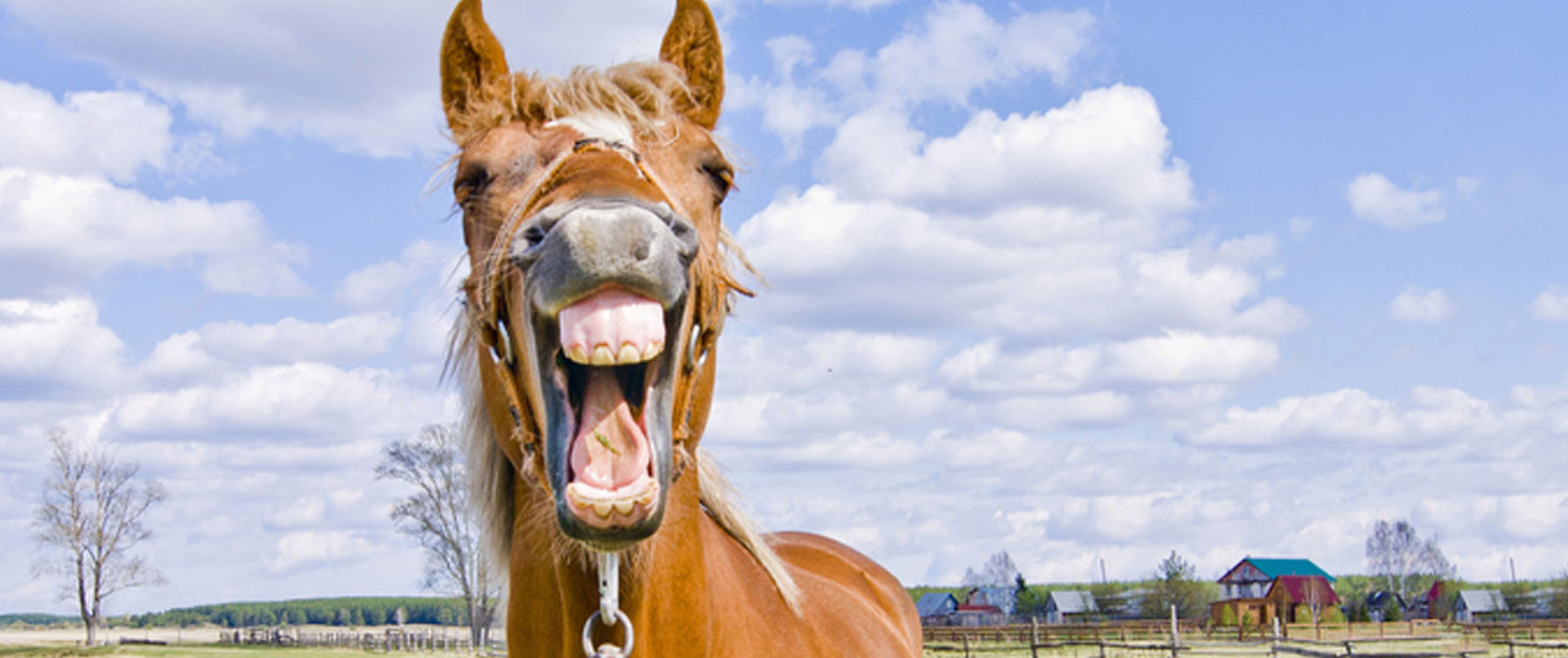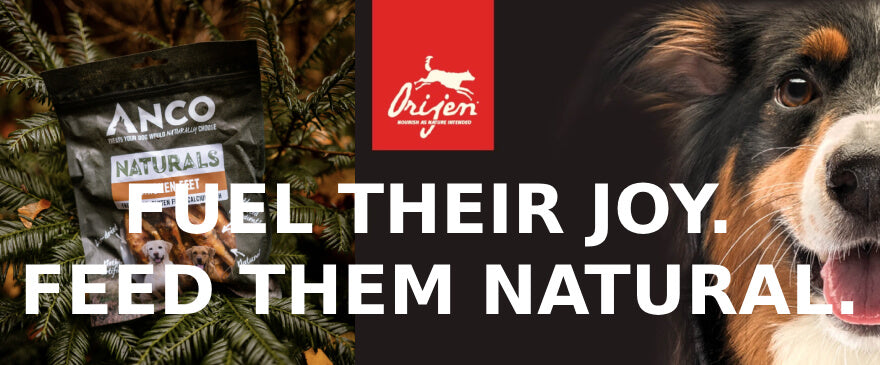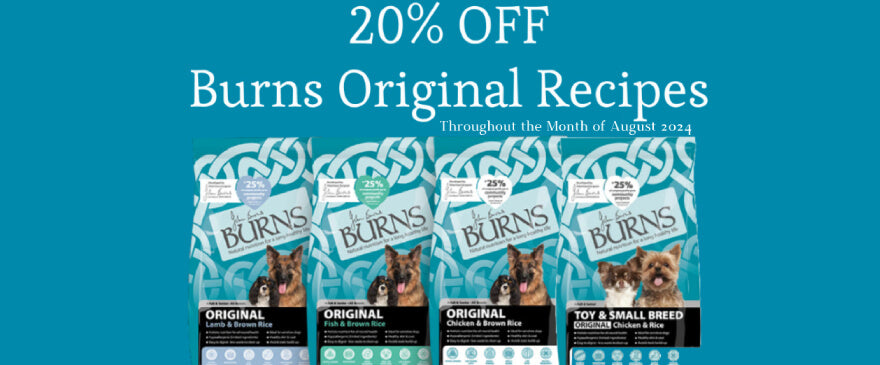FREE SHIPPING OVER £49 T&C'S APPLY
How to Care for your Horse and Pet's Teeth
April 08, 2020 6 min read 0 Comments




Humans aren't the only ones who need good dental hygiene! Good dental health is very important for all animals, not maintaining good dental health can lead to tartar build-up, and gum disease. Painful gums and teeth will also put any animal off their food and can lead to even more life-threatening conditions including liver and kidney disease! So, we put together a multi-species guide to animal dental health for you on how to care for your pet's pearly whites.
Dogs & Cats
Firstly, starting a routine when your dog or cat is young will make it much easier for them to get used to a routine, but older pets can be taught it may just take a bit more time and effort. There are many ways that you can introduce a dental routine whether it be brushing, dental chews or even specialised dental dog or cat food.
Firstly, brushing your dog or cats' teeth is a fantastic way to improve their dental hygiene, even though they may be a little resistant at first, with a bit of practice you should be able to get them to enjoy a good brush! Although, if they are likely to bite or potentially be aggressive, we would recommend trying an alternative form of dental hygiene.
Brushing your Pet’s Teeth:
When brushing your dog or cat ’s teeth it’s important to remember to keep the sessions to the shortest time you can, to prevent them from becoming agitated or unsettled. Also, try to do it in a quiet distraction-free area at the same time every day to keep them focused and in a regular routine. And most importantly it may take a while for them to get used to brushing, so don’t forget to reward good behaviour with praise and rewards!
Firstly, get the required things, including a suitable toothbrush and a toothpaste specially designed for pets, human toothpaste is not suitable for dogs or cats. Now you need to get your dog or cat used to the toothpaste and the feeling of brushing.
Dog
Allow your dog to try the toothpaste by placing some on the end of your finger and letting them lick it, they should lick it and enjoy the taste and want more.
Next, put some more toothpaste on your fingertip, and with your other hand gently hold their muzzle gently keeping their mouth closed to avoid injury. Insert your finger under their top lip rubbing your fingertip on their teeth, then move it further back inside the cheeks.
Then get them used to have a brush in their mouth. Wet the toothbrush with water and add some toothpaste, pushing it down into the bristles so that it doesn’t fall off. Then gently hold the muzzle lifting their top cheek with your finger, then gently brush the canine teeth (the longest ones), try not to start brushing at the front of the mouth as this is the most sensitive part of a dog’s mouth.
Now try brushing further back in the mouth, to the molar teeth, moving past the inner corner of the mouth (if you struggle to do this get a smaller brush) and gently brush the upper the teeth and then the lower teeth gum line, increase brushing gradually and if your dog starts to become agitated or shows signs of distress, stop.
Now finally lift the front of the mouth and brush the incisors (the front of the teeth) gently.
Your dog isn’t going to get the hang of brushing straight away, so try to take it step by step making sure your dog is comfortable with each step before continuing. If they don't then revisit an earlier step until they are.
Cat
First, make sure you have a suitable toothbrush and toothpaste; cat toothbrushes will be smaller than a dog or human brushes as they have a much smaller mouth.
To clean your cat's teeth, hold them in your lap gently and gently raise their lips so that their teeth are exposed.
To start get your cat used to brushing by gently massaging their gums, with either your finger or a cotton swab.
Then gently use the toothbrush to brush around your cat’s teeth making sure to clean their gums as well. Take it slow, making sure your cat is comfortable and if they squirm or show signs of discomfort, stop.
Dental Treats and Special Foods
If brushing is not an option or your pet just really doesn’t like it no matter what you do, then Dental Chews are another great way to keep your pet healthy as they not only clean your pet’s teeth, but they also are a tasty treat that makes your dog or cat’s breath smell good!
A good quality pet food, or a speciality food, will prevent plaque from hardening and cause tartar build up, so it's worth checking whether your food does that and maybe consider switching to a food that does.
How to tell if something is wrong?
It’s hard to tell when something is bothering your dog or cat, but they are a few key signs to look out for, if you notice any of these symptoms then a trip to the vet would be recommended:
- Bad breath
- Brownish-yellowy tartar crust along the gum line
- Lumps or Abscesses within the mouth
- Red, swollen, painful or bleeding gums
- Misaligned or missing teeth
- Pawing at the face or mouth
- Change in eating or dog chewing habits
- Excessive drooling
- Discoloured, broken, missing or crooked teeth
Horse
When it comes to your Horse dental health, it’s a lot different to that of cats and dogs! A dental check-up is essential for horses and whether it's their yearly check-up via an Equine Dentist or Veterinarian, or just an in-between check-up by yourself.
At different life stages, a horse should have different frequencies of check-ups.
From Birth to 18 months – At least 1 check up
From 18 months to 52 months – At least 2 check-ups every year
52 months to 18 years – At least 1 checkup every year
18 years plus – Frequent oral exams to ensure dental hygiene is at its best.
Doing your own check ups
Although getting your horse's teeth checked by a professional every year or so is essential and important, maintaining and keeping an eye on your horse’s dental health is also a vital part of your horse’s dental hygiene. So, its good to know what to keep an eye out for and how you can improve your horse’s dental health.
Firstly, pay close attention to the way your horse eats, it can tell a lot about the state of a horse’s mouth. If they are dropping food, chewing it then spitting it out, drinking a lot during eating, eating slow or even colic and choke, can all be signs of dental problems. If you notice any of these signs, it may be a good idea to get your horse’s mouth checked.
Secondly, check your horse’s teeth after their last meal of the day, check that they have no feed, hay or grass trapped between their teeth. If they do, use a stiff toothbrush to remove any stuck or trapped food as to reduce the chance of tartar build up. After cleaning, use a hose or a large syringe to rinse out your horse’s mouth, to rinse out any additional build up. Rinsing is a great way to maintain older horse’s dental hygiene as its gentler on their mouths.
To prevent any jaw/dental issues arising, feed your horse from the ground; this is how horses naturally eat so is the most natural to them. This ensures that their jaw position is correct and therefore doesn’t contribute to abnormal wear to the teeth.
Check your horse’s mouth for any abnormal tooth positions or defects that may cause them discomfort. Wolf teeth, the lone pointy teeth that grow in the Diastema (the distance between a horse’s incisors and molars), are normal in horses, and shouldn’t interfere with the bit as they are usually tiny, although if you have concerns regarding them, you should speak to an Equine Dental Practitioner.
Also in PetnPony Blog

Chronic Kidney Disease in Cats - Royal Canin
February 24, 2025 3 min read 0 Comments
Cats - like dogs and humans - have two kidneys situated in the abdomen close to the spine and last rib. They are vital organs, continually filtering toxins and waste materials from the blood and producing urine to enable those toxins to be excreted from the body.

Fuel Their Joy, Feed Them Natural: Discover Premium Dog Foods at PetnPony
August 08, 2024 4 min read 0 Comments

20% Off Burns Original Recipes at PetnPony this August! Natural, Hypoallergenic, and Delicious!
August 05, 2024 3 min read 0 Comments

